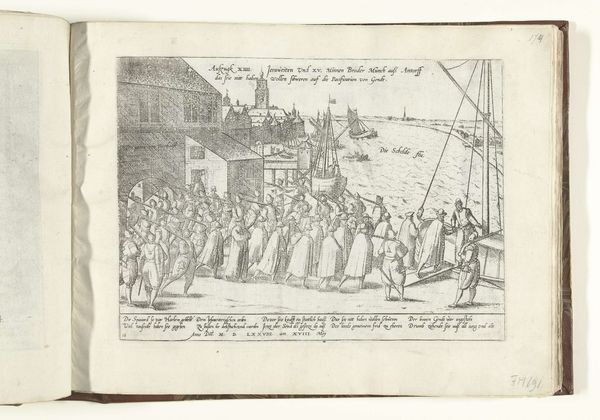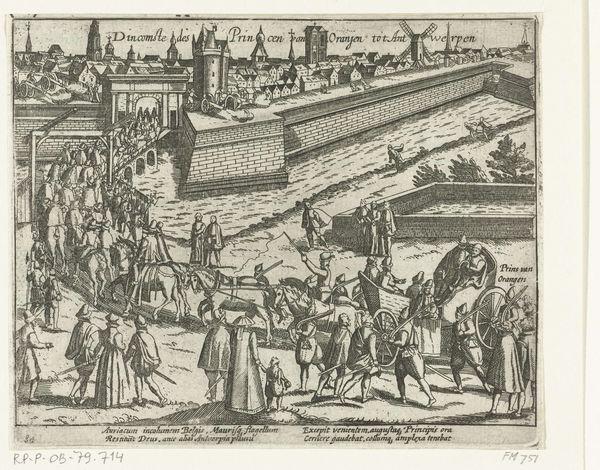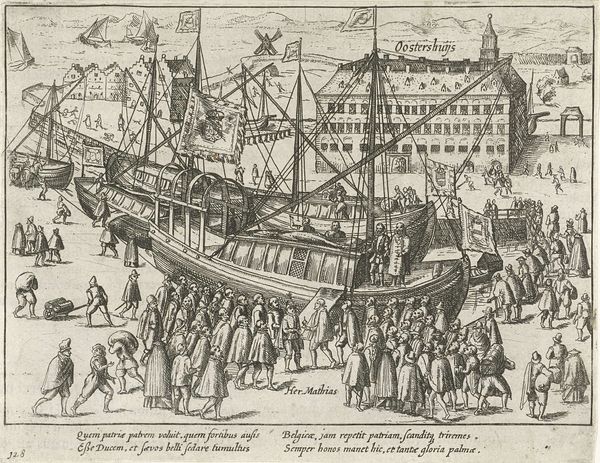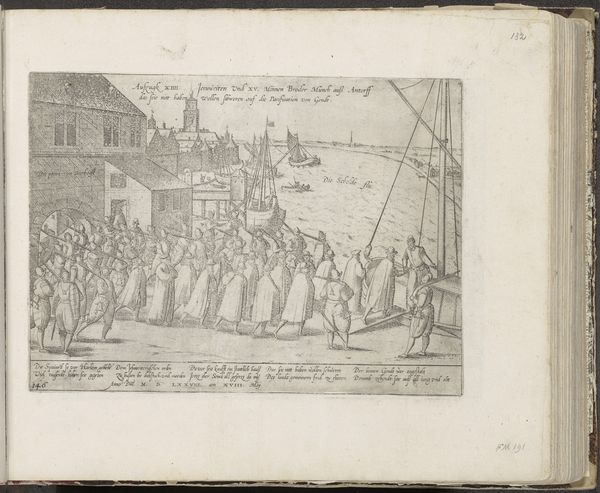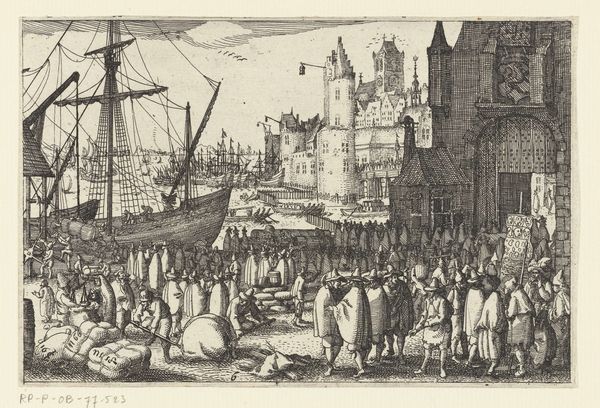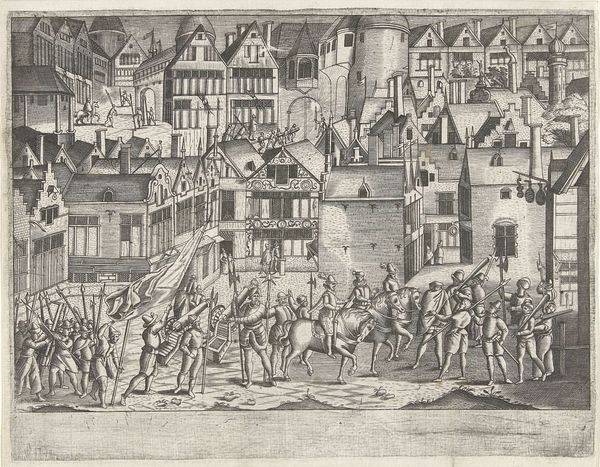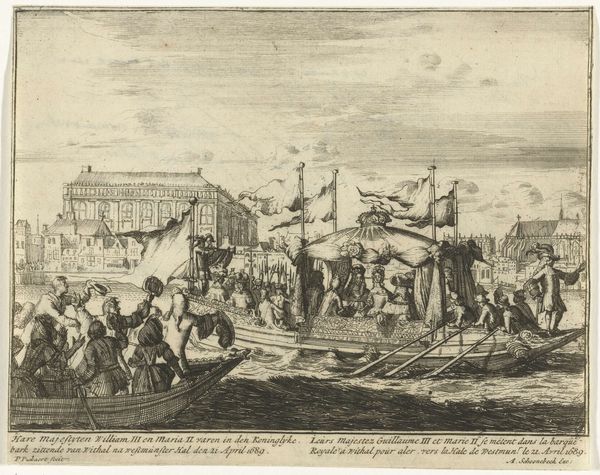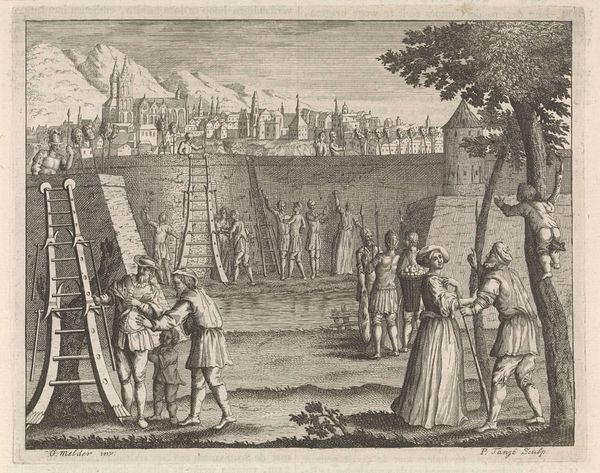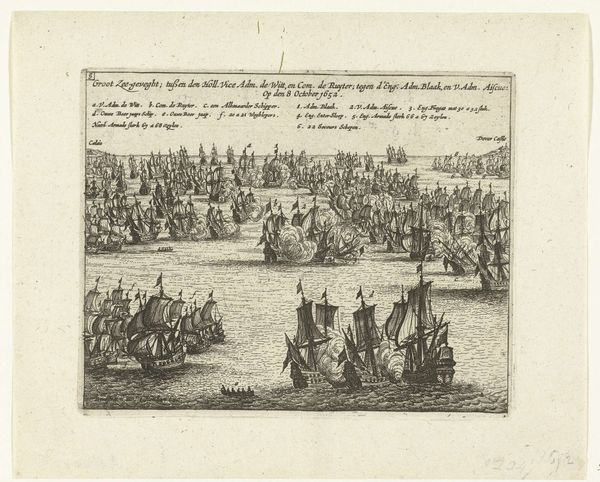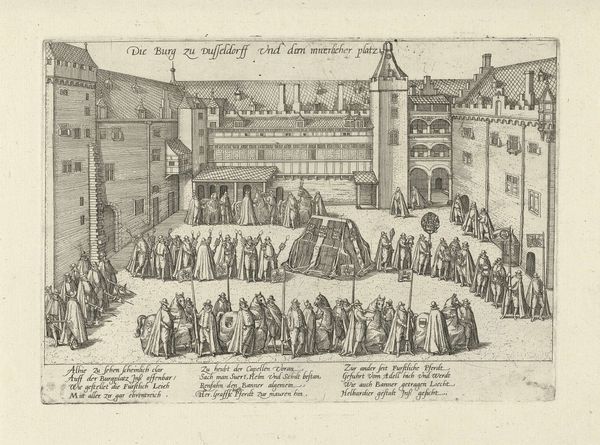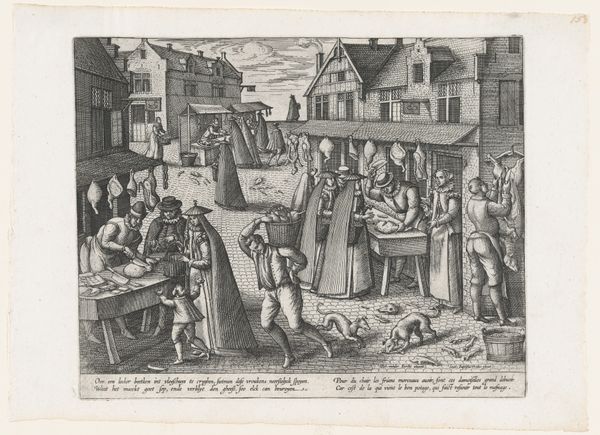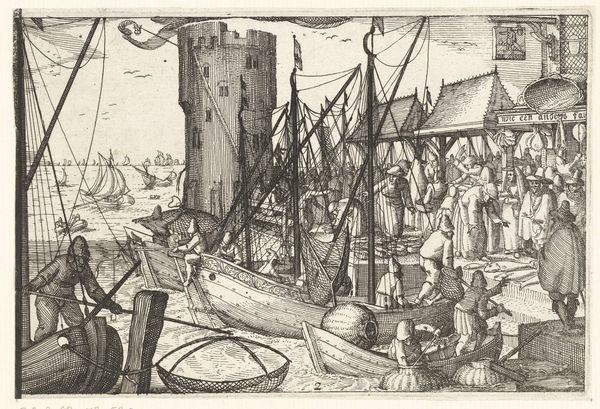
print, engraving
#
baroque
# print
#
old engraving style
#
landscape
#
figuration
#
soldier
#
history-painting
#
engraving
Dimensions: height 135 mm, width 161 mm
Copyright: Rijks Museum: Open Domain
Curator: Here we have a print titled "Jezuïeten en Minderbroeders verlaten Antwerpen, 1578," likely created between 1613 and 1615. The artist remains anonymous. Editor: It’s striking! The contrast is stark, and the sheer number of figures squeezed into the composition makes it feel really dynamic, if a bit claustrophobic. Curator: Absolutely. This piece documents a specific historical moment: the expulsion of Jesuits and Friars Minor from Antwerp in 1578 amidst the religious and political turmoil of the time. This occurred in a period of the Dutch Revolt against Spanish rule and the evolving religious landscape in the region. The city's politics, swayed by various factions, resulted in this ejection, captured here with clear visual narrative. Editor: It is interesting to think about printmaking’s role then as a means of propaganda or, at the very least, public record. Engravings like this were relatively reproducible, which is a real contrast with unique works, allowing for wider distribution of information—or perspectives, in this case. Do we know anything about who this was created for, in terms of an audience? Curator: We can infer an intended audience deeply invested in the religious conflicts of the time. The inscriptions in Latin suggests an educated readership, maybe within the scholarly or clerical circles that were very opinionated on those events. It's difficult to be precise. Editor: Thinking about the materials, that fine detail, etched with incredible precision, must have required significant skill and labor. The process is part of what informs how the social tensions and conflicts of the time were perceived, made visible, and consumed, quite literally. Curator: Precisely, from a historical perspective, the visual language in this print gives valuable insight into the complex religious and political narratives circulating at that time and into the artistic techniques that aided the transmission of these narratives to wider audience groups. Editor: Seeing all these little pieces in this medium make it interesting and help one realize how vital and resourceful such simple ways of making art are. Curator: It reminds us of the enduring role of visual communication during conflict, both then and now.
Comments
No comments
Be the first to comment and join the conversation on the ultimate creative platform.
